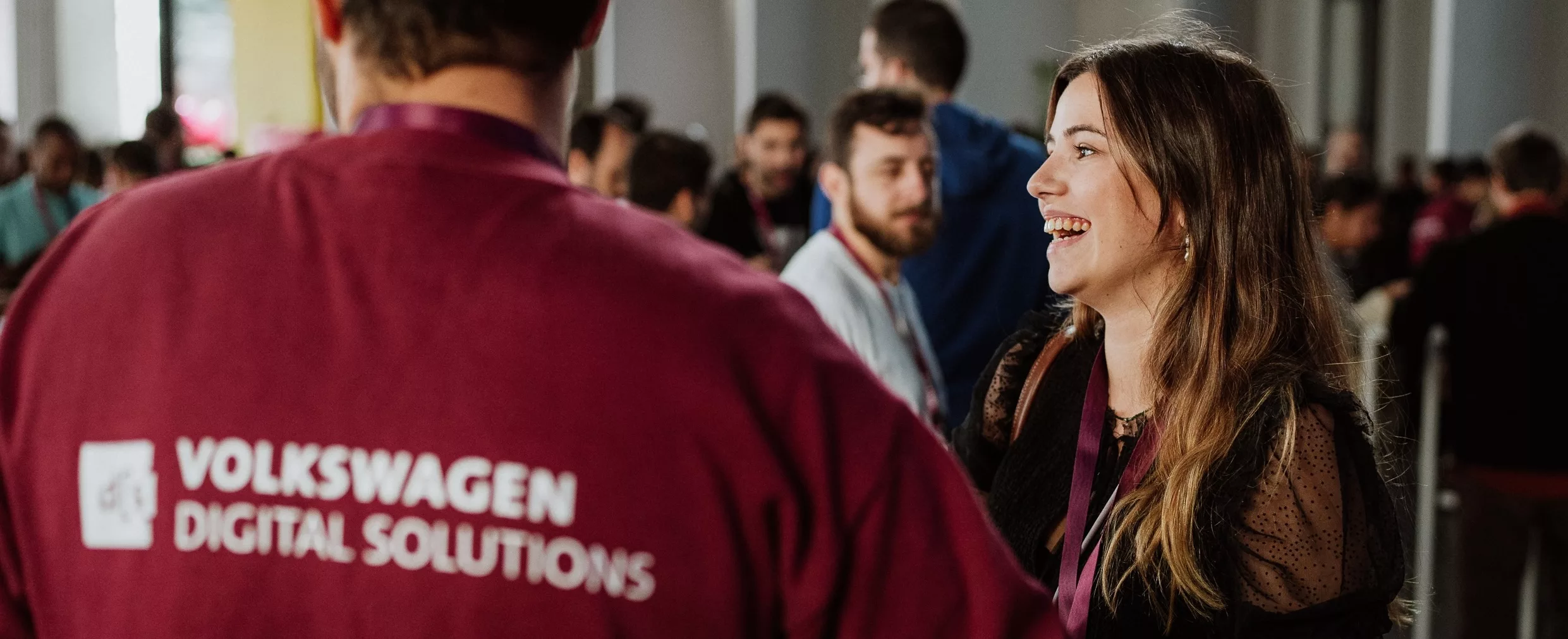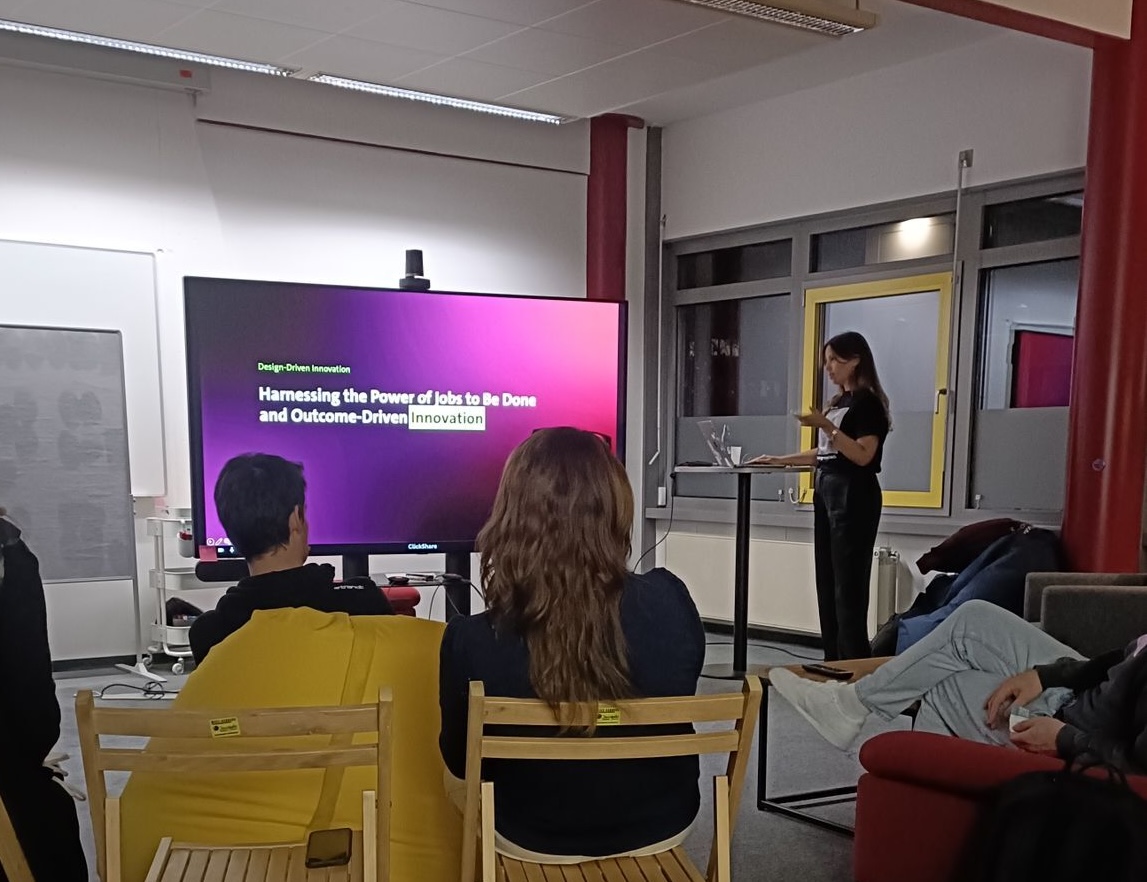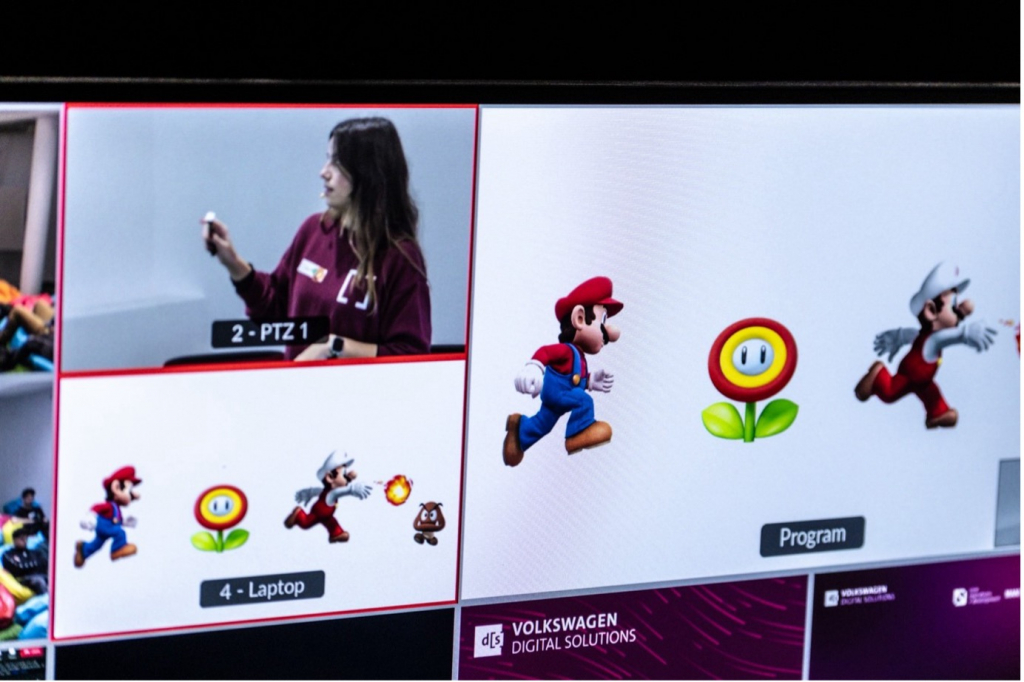Design-Driven Innovation as a strategic approach

World Usability Day Wolfsburg
If you are a Designer working in IT and delivering digital products, you probably heard about World Usability Day. If you are not a Designer, chances are smaller… Either way, I’m happy to be writing this article and spreading the word about this day, which is about “celebrating the strides we have made in creating usable products and educating the masses about how usability impacts our daily lives”.
On November 9th 2023, an event took place at one of our Software Development Center (Volkswagen has several SDC’s globally), in this case in Wolfsburg, and I had the opportunity to talk about Design-Driven Innovation. Throughout my career I’ve found that I really enjoy promoting and participating in exchanges of knowledge. It is a great way to learn since it’s an opportunity to structure your own ideas. In such a big organization it is both a challenge and a great opportunity to stay connected with professionals from all over the world.

Know more about the international initiative here.
But what is Design-Driven Innovation?
Since an early age, I was always known for asking a lot of questions, always wanting to get to the bottom of things. As I usually say, I see myself as a problem finder.
Therefore, it really comes as no surprise to me that I love being a Product Designer and that I see this area as being far from making digital products look pretty. Design can be the key to Innovation, leading meaningful change (through human centered approaches and creative thinking).
“Studies comparing successful and unsuccessful innovation have found that
the primary discriminator was the degree to which user needs were fully understood.“
– David Garvin, Harvard Business School Professor and known for contributing to Quality Management and Strategy
To talk about Design-Driven Innovation I focused on the following key design concepts that can highly contribute to a successful innovation strategy: Jobs to Be Done and Outcome-Driven Innovation.
Jobs to be Done & Outcome-Driven Innovation
A Job to Be Done aims to explain how and why people buy or use products, the goal is to uncover true motivations. Finding approaches like this and the 5 whys was a gift to the little girl that was always told she asked too many questions.
But to give you a better idea of Jobs to Be Done, we can think of Mario (from Mario Bros game). We might focus our attention on the fire flower (meaning the product) but what matters is the version of Mario he can be through the power of the fire flower, with the ultimate goal of defeating goombas. But if we think further, his ultimate goal is not to defeat goombas, but Bowser. And finally save Princess Peach to freely live their love.
This is the power of Jobs to Be Done, to uncover true motivations. This allows us to move away from the current solution and outputs to instead explore new solutions that can have a greater impact on the actual needs of users.

Outcome-Driven Innovation is the process developed by Tony Ulwick, sparked by the flop of an IBM project he was involved in in 1984 and tested throughout many years of practice through his company Strategyn.
Ulwick came to the idea of focusing on the process users were undergoing to reach a specific goal. So, the mindset switched from focusing on the output to the process itself being the subject of investigation. Based on his book Jobs to be Done: Theory to Practice (2016), this innovation method has 86% success rate compared to an average of 17% among traditional innovation processes.
The process is the Job, the steps of that process are Outcomes. He would focus on finding the Job, mapping the Outcomes, understand how people measured success in each to find the unmet and underserved outcomes and turn them into opportunities.
Based in this theory, I explored the 7 questions that lead to Design-Driven innovation and answered them with specific approaches:

- What job is the user trying to get done? – I found a specific approach to user interviews to find job statements.
- What are the user’s desired outcomes? – map them into a Job map.
- How do they measure value? – create outcome statements.
- Are there unmet or underserved outcomes? – run a survey to find the underserved outcomes.
- Which of those should we target as opportunities? – map them into an opportunity landscape.
- How can we identify and test our assumptions? – run assumption tests.
- How might we solve these needs in a new way? – use “How might we” questions and practice creativity.

And, as a bonus, if I can add to this, include a multidisciplinary team on the process of finding answers to these questions, from stakeholders to developers. Raise awareness on Human Centered Design and create accountability within the whole team, this is the path to successful innovation.
Do you want to share thoughts on these topics, understand some concepts in more depth or have a glimpse of how I actually do this? Reach out or explore my posts on LinkedIn and Instagram (I’ll be sharing some tips there)!





